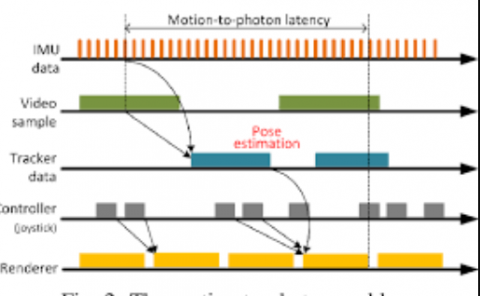Providing High Capacity for AR/VR traffic in 5G Systems with Multi-Connectivity
PubDate: Aug 2022
Teams: Russian Academy of Sciences;National Research University Higher School of Economics
Writers: Maxim Susloparov, Artem Krasilov, Evgeny Khorov
PDF: Providing High Capacity for AR/VR traffic in 5G Systems with Multi-Connectivity

Abstract
Augmented and Virtual Reality (AR/VR) is often called a “killer” application of 5G systems because it imposes very strict Quality of Service (QoS) requirements related to throughput, latency, and reliability. A high-resolution AR/VR flow requires a bandwidth of dozens of MHz. Since the existing low-frequency bands (i.e., below 6 GHz) have limited bandwidth and are overpopulated, one of the ways to satisfy high AR/VR demands is to use wide frequency channels available in the millimeter-Wave (mmWave) band. However, transmission in the mmWave band suffers from high throughput fluctuation and even blockage, which leads to violation of strict AR/VR latency and reliability requirements. To address this problem, 5G specifications introduce a Multi-Connectivity (MC) feature that allows a mobile user to connect simultaneously to several base stations. The paper considers a scenario with two base stations: the first base station operates in the low-frequency band to provide reliable data delivery, while the second one operates in the mmWave band and offers high data rates when the channel conditions are favorable. An open question that falls out of the scope of specifications is how to balance AR/VR traffic between two links with different characteristics. The paper proposes a Delay-Based Traffic Balancing (DBTB) algorithm that minimizes resource consumption of the low-frequency link while satisfying strict AR/VR QoS requirements. With extensive simulations, DBTB is shown to double the network capacity for AR/VR traffic compared with the state-of-the-art traffic balancing algorithms.



